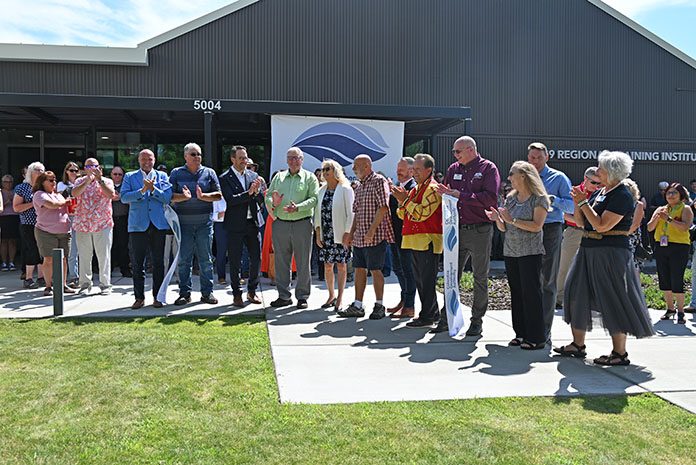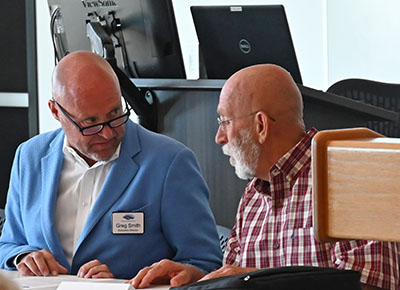
The former Umatilla Chemical Depot officially became the property of the Columbia Development Authority (CDA) back in March. On Wednesday, July 12, that landmark transfer was celebrated during a ceremony highlighting the many collaborations that made the event possible.
Now known as the Raymond F. Rees Training Center, the 17,000 acres will be used for both National Guard training as well as industrial development.
The property’s name is in honor of retired Maj. Gen. Raymond F. Rees, of Helix, four times former Oregon National Guard adjutant general.
The Columbia Development Authority consists of representatives from Umatilla and Morrow counties, the ports of Umatilla and Morrow and the Confederated Tribes of the Umatilla Indian Reservation (CTUIR). These entities and the Oregon Military Department have formulated redevelopment plans for the former depot property.
The event began with a blessing by Don Sampson, executive director of the CTUIR.
“This land is coming back to us – all of us,” he said.

CDA Chairman Kim Puzey spoke eloquently and movingly about the role the former depot played in American military history since World War II. The depot stored bombs in the igloos for decades before chemical weapons began being stored there in 1962.
Puzey gave a short history of how war has impacted the country and the world over the decades, noting how he got involved on two occasions in trying to get Americans out of war-torn countries – both in Afghanistan and Ukraine. And while the destruction of the chemical weapons that were stored at the Umatilla depot and others around the country have made the world a safe place, war and suffering still exist.
“I hope we can finally get to the day when we stop making war,” he said.
CDA Executive Director Greg Smith said the basic theme of the process that led to the transfer of the former depot property was one of “collaboration.” He spoke of the collaboration between the CDA and the Oregon Military Department that led to a water rights agreement, collaboration between the CDA and the Confederated Tribes of the Umatilla Indian Reservation to protect the habitat, and the various partners working together to secure thousands of acres for future industrial development on the property.
“This is some of the most prime industrial land in the Pacific Northwest,” Smith said to a packed room Wednesday morning. “Negotiating water, industrial land and habitat is not easy.”

Hermiston Mayor Dave Drotzmann humorously recalled back in the 1990s when Chemical Stockpile Preparedness Program (CSEPP) delivered boxes to every household to safeguard families in the event of a chemical accident. Inside the small box was some plastic wrap, duct tape and what looked like a World War II-era radio. The idea was to find a room in the home, cover the door with plastic wrap and camp out for a couple of days hoping the chemical agent wouldn’t seep into the room.
Drotzmann said his family chose an upstairs bathroom. Fortunately for the Drotzmanns and everyone else, that absurd scenario never played out.
“I’m thankful I didn’t have to spend three days locked up with my family in the bathroom,” Drotzmann said. On a more serious note, the mayor said he was grateful for the workers who kept any accidents from happening.
He also thanked local, state and federal leaders for making the property transfer possible.
“We couldn’t have done it without their dedication,” he said.
The counties and ports plan to develop industrial areas on the 9,511 acres now owned by the CDA, while the tribes aim to restore wildlife habitat and preserve cultural and historic sites. The National Guard will use 7,500 acres of the land for training purposes.
Construction of the ordnance depot began in January 1941. At its peak, more than 7,000 people worked there. Spread throughout the acres were 1,001 weapons storage igloos. On March 21, 1944, an explosion occurred while crews were loading 500-pound bombs into an igloo. Six people died in the explosion, the sound of which was heard as far as 30 miles away.
Redevelopment plans for the property began in 1988 under the Base Realignment and Closure Act. The Army destroyed the last chemical weapons at the depot in 2011.










